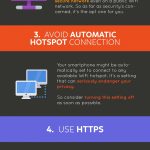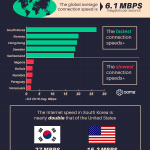Best Proven Tactics for Using Public WiFi [Infographic]
— May 23, 2017
Whereas some people may expose the dangers of using public WiFi services for business operations, sometimes we need to acknowledge the overall cost of traveling with WiFi capable USB dongles, or the infrastructure for properly setting a VPN network.
Instead, if our business can be considered to be in its very early stages of development, public WiFi services become a necessity in the pursuit of cutting off unnecessary expenses that can undermine our company’s budget for the areas that’s needed. Therefore, we would like to invite you to review some of the best tactics to apply to take the most out of public WiFi networks for the sake of your business.
Invest in security services
If you already know you need to share sensitive information or if that kind of information happens to be stored on your hard drive, obviously IT professionals working for your brand have strongly advised you against login into public internet networks as a way to prevent security breaches. Even if we cannot do much on who does log to these services often offered by cafés, plazas, libraries, etc., we can surely adapt some security methods to protect our business from the potential data leak scenario or viruses.
![Best Proven Tactics for Using Public WiFi [Infographic]](https://www.devicedaily.com/wp-content/uploads/2017/06/01-Best-Proven-Tactics-for-Using-Public-WiFi-Infographic.jpg)
Photo courtesy of Negative Space
Acquire the services of a strong firewall software, preferably a hardware firewall which nowadays comes in both USB pen drive format or sizes similar to external hard drives. If security means are increased to the point it requires a physical device to protect the user’s internet experience; then hackers don’t have much to do with those strong layer protections that they cannot simply bring down as it happens with Microsoft’s Firewall services. Also consider that potential hackers tracking down users in open public networks are, by no means, professionals. They happen to be amateurs who like to test their skills against random people to build a reputation.
Consider network inconsistencies
One of the perks of working with public networks are the constant connection drops we can experience. This can be due to misplaced router devices, thus creating interferences in WiFi signal, or because of the amount of connections taking place at the same time, which leads the network to overload.
![Best Proven Tactics for Using Public WiFi [Infographic]](https://www.devicedaily.com/wp-content/uploads/2017/06/02-Best-Proven-Tactics-for-Using-Public-WiFi-Infographic.jpg)
Photo courtesy of Startup Stock Photos
If by chance, some of these connections happen to be downloading files or streaming high-quality videos, the situation only worsens; thus you need to acknowledge that you cannot transfer high sized files using these services unless they are split into multiple parts to lessen the file transfer time and prevent interruptions.
You can use software like WinZip or WinRAR to split the file into smaller parts, then upload the content to cloud services like Dropbox, Google Drive or MEGA. That’s the best way to sort out this kind of inconveniences.
Acknowledge peak times for public network services
If you are visiting a local café that provides WiFi services for their customers, perhaps you have better luck than just logging at a plaza, terminal or library regarding internet speed. However, these businesses have their peak time as well, which usually ranks nearby the main courses traditional times: 8 am (breakfast), 12 pm (lunch) and 5-6 pm (evening tea time). Everything in the middle is grey ground. Hence you can find a good internet connection available to work.
Of course this will depend on the place you happen to be staying at, if passwords for public networking are reset on daily basis (for preventing nearby neighbours to log for these services), and the usage network owners do to the connection (if they stream live TV services at their business, if file downloads are being hosted at the moment, and the bandwidth they hired for this place). Further information on the common network quality for free WiFi services worldwide can be read in this infographic courtesy of Ooma.
![Best Proven Tactics for Using Public WiFi [Infographic]](https://www.devicedaily.com/wp-content/uploads/2017/06/Best-Proven-Tactics-for-Using-Public-WiFi-Infographic.png)
The endgame: reducing expenses
The sole reason it proves to be valid to log into public networks while making work-related trips is to lower costs; therefore, if we need to pay extra fees for accessing that network (like being asked for a fee for being many hours at a café using their network, despite already ordering a meal), or if the quality of the internet connection isn’t as expected, then there’s no point in using these services as valid networking means.
Put in balance the expenses of paying for data roaming or external modems against the potential inconveniences of public internet services and then you will find your answer. Good luck!
Digital & Social Articles on Business 2 Community
(58)

![Best Proven Tactics for Using Public WiFi [Infographic]](https://www.devicedaily.com/wp-content/uploads/2017/06/Best-Proven-Tactics-for-Using-Public-WiFi-Infographic-239x2080.png)






